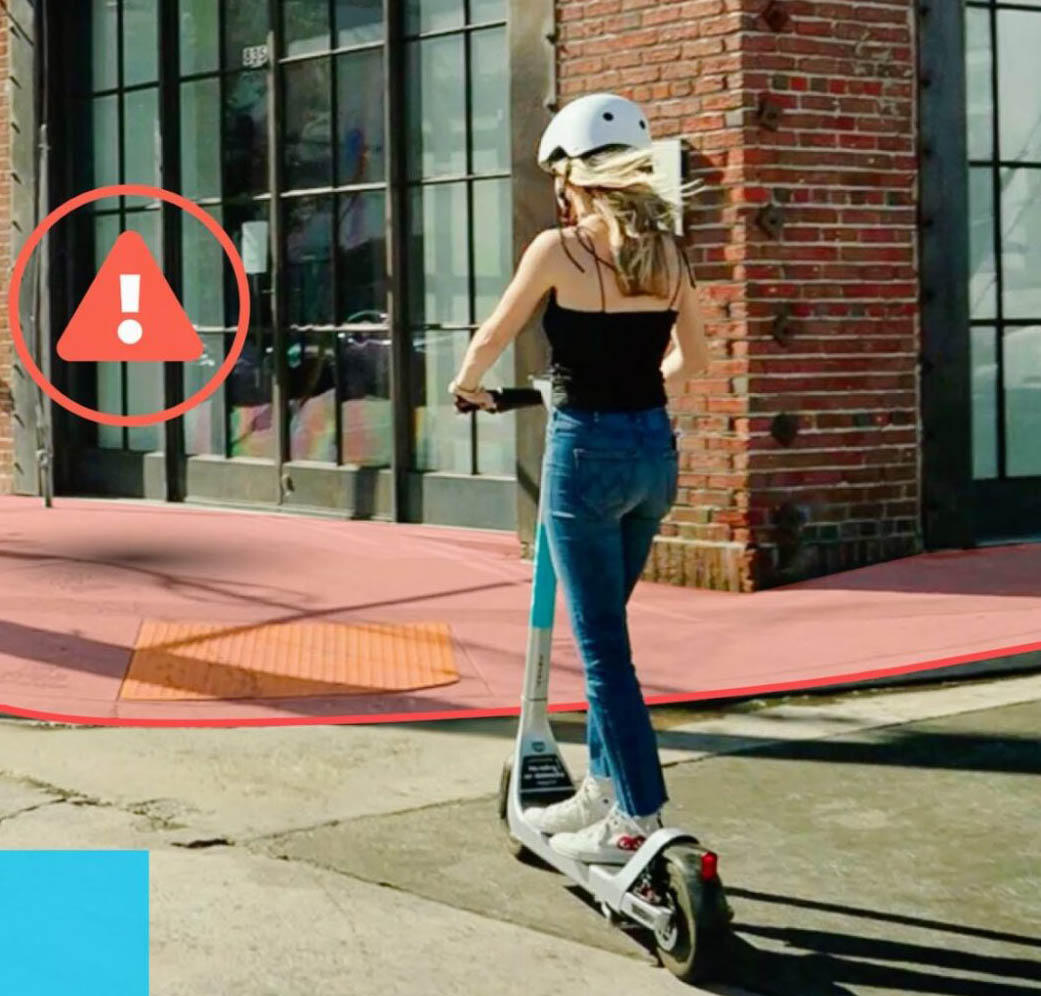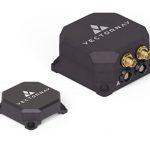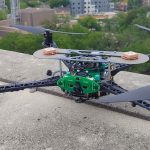A maker of electric scooters has developed a GNSS- and inertial-based technology to keep its own products off of city sidewalks. Bird, a provider of environmentally friendly electric transportation, announced a smart sidewalk protection technology developed in partnership with u-blox. Smart Sidewalk Protection, integrated into Bird’s vehicles, is designed to prevent micromobility devices from being used on sidewalks and footpaths. Smart Sidewalk Protection is a sensor-based fusion of GNSS, inertial, real-time kinematic (RTK) and other onboard vehicle sensors.
As cities seek to reduce carbon emissions by expanding transport options, specifically with shared micromobility (rental scooters), technology that prevents sidewalk riding has become increasingly important. Through its collaboration with u-blox, Bird co-developed a robust, integrated sensor fusion system that tracks location with centimeter-level precision. By combining u-blox’s ZED-F9R high precision dead reckoning module with centimeter-level sidewalk mapping and Bird’s suite of onboard vehicle sensors, the integrated system effectively and efficiently detects and prevents sidewalk or footpath riding in real time.
For example, as opposed to GPS with cloud-based maps that can take more than 15 seconds to respond, Bird’s new smart sidewalk protection can safely bring a vehicle that has entered onto a sidewalk to a safe stop within a few seconds, allowing the rider to walk the vehicle back to the roadway or bike lane.
According to Bird, the process of preventing sidewalk riding requires, among other things:
- Hyper-accurate locations of moving vehicles
- Precise sidewalk measurements
- Immediate enforcement
- Scalability
A solution must work in hundreds of different city environments across the globe and be rolled out with minimal cost and labor while maintaining accuracy over time.
Using the u-blox ZED-F9R dual-band multi-constellation GNSS receiver that supports GPS, Galileo, GLONASS, and BeiDou, the module processes real-time vehicle data including wheel speed, IMU sensor data including acceleration and spatial orientation, and real-time kinematic data that corrects for ionospheric interference. The technology is also optimized for e-scooters by applying dynamic models matching the movements of the vehicle.
A 5-step process creates high-precision sidewalk maps accurate to the centimeter.
Step 1: It starts with a geofence outline constructed from satellite imagery or city GIS data.
Step 2: Bird uses surveying equipment to measure the location of three city landmarks. Only a few measurements are needed for each city.
Step 3: Once the landmarks have been identified, Bird compares their location to the satellite imagery to determine offsets and rotations.
Step 4: The companay then uses these offsets and rotation values to shift and transform each of the original geofence outlines.
Step 5: Finally, after our geofence outlines have been updated, they are pre-loaded onto our vehicles to eliminate latency.
When combined with the hyper-accurate location measurements provided by the sensor-fusion module, BirdOne and BirdAir e-scooters will detect and respond to sidewalk riding almost instantly. Riders infringing on a pedestrian sidewalk receive both an audible alert as well as a mobile notification, and the vehicle is brought safely and smoothly to a stop by removing throttle.
“After three years of building, testing, and piloting a range of technologies including but not limited to on board cameras, GPS tracking, ultra-wideband, and beacons,” said Scott Rushforth, Chief Vehicle Officer at Bird, “we found that each was insufficient with regard to accuracy, precision, immediacy, or scalability. Our testing led us to a collaboration with u-blox which resulted in the development of our end-to-end sensor-fusion solution that meets our criteria.”
Bird’s sidewalk detection technology is currently being piloted in Milwaukee and San Diego, and is expected to be piloted in Madrid in early 2022. Founded in 2017 and based in Santa Monica, California, Bird provides fleets of shared micro electric vehicles to riders in more than 300 cities globally markets its products via retailers and distribution partners. Bird partners closely with the cities in which it operates to provide a reliable and affordable transportation option for people who live and work there.






